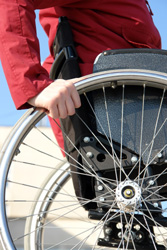Matching assistive devices to individuals
Assistive technology (AT) refers to devices which assist a person with disabilities to perform tasks that are otherwise very difficult or impossible for them. The technology is designed to allow them more independence from carers and to push forward confidence in their skills. One key feature of AT is that it is designed keeping those with permanent disabilities in mind, rather than being geared to those rehabilitating. The I-MATCH project was concerned with matching AT to the specific user and their individual skills. This is important because disabilities of individuals are as different as the people concerned. Degrees of disability vary and many factors must be considered if AT is to be used effectively. This is why the researchers involved have designed a method for assessors to use in order to recommend the optimal device in each individual case. Using a virtual environment, users were able to experiment with different devices, enabling them to consider the advantages and disadvantages of each. Users can be reluctant to use AT at first. It was observed that when training was provided they were much more likely to adopt the technology. A wheelchair which had haptic devices, switches and joysticks was tested by users so they could decide which of these controls were more suited to them. Upper limb performance tests were carried out using specially designed software. Reports were then produced which allowed the assessors to recommend the most appropriate interface. The decision support system was then put together. It allowed for systematic comparisons to be made which, based on a score system, allowed for better assessments.







